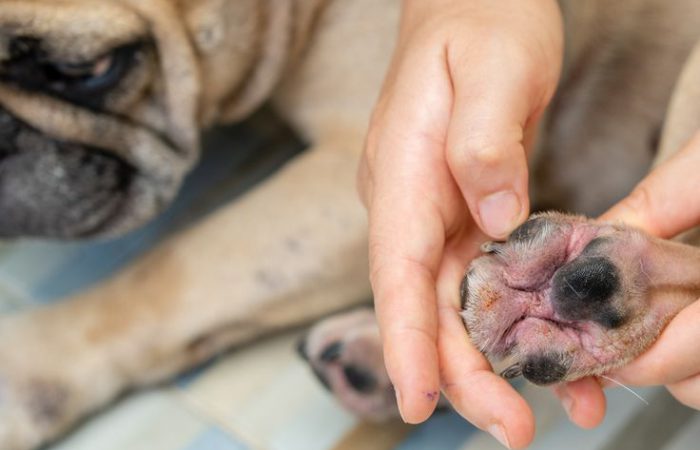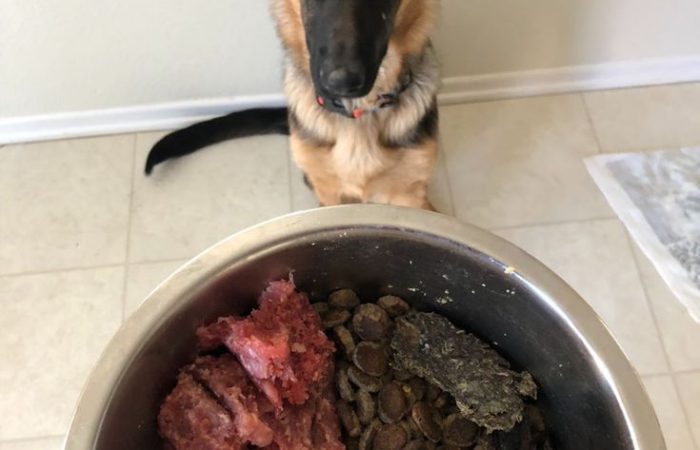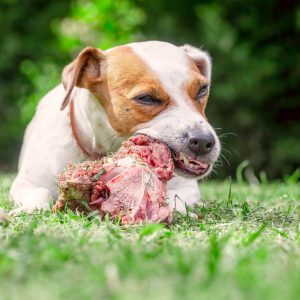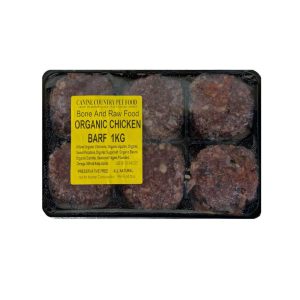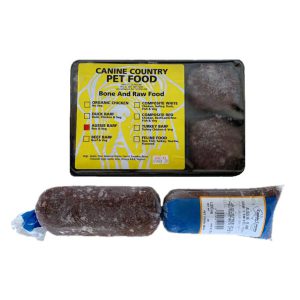Raw Dog Food for Allergies: Can It Help?
When dogs suffer from allergies, it can be challenging for both pets and their owners. Symptoms like itchy skin, digestive issues, ear infections, and chronic scratching can disrupt your dog’s quality of life. While many solutions exist to address these allergies, one growing method is switching to a raw food diet. But can feeding raw dog food really help manage or even eliminate allergies? In this blog, we’ll explore how a raw diet might be the answer for dogs suffering from food and environmental allergies.
Understanding Allergies in Dogs
Before diving into how a raw diet may help, it’s essential to understand what causes allergies in dogs. There are two primary types of allergies:
- Food Allergies:
- These occur when a dog’s immune system overreacts to certain ingredients in their diet, such as sugar, preservatives and additives commonly used in commercial kibble. Food allergies can manifest as skin irritations, chronic ear infections, or gastrointestinal issues such as vomiting or diarrhea.
- Environmental Allergies:
- These are caused by external factors like pollen, dust mites, mold, or fleas. While environmental allergies can’t be cured through diet alone, a nutrient-rich raw diet may help strengthen your dog’s immune system and reduce inflammation, making them less reactive to allergens.
How a Raw Diet Can Help with Allergies
A raw dog food diet is made up of natural, whole ingredients like raw meat, bones, organs, and vegetables. By eliminating processed foods, additives, and common allergens, a raw diet may help reduce the severity of allergic reactions. Here’s how:
- Limited Ingredients & Elimination of Common Allergens:
- One of the key benefits of a raw diet is that it allows for better control over your dog’s food ingredients. Many commercial pet foods contain fillers, artificial preservatives, grains, and additives, which are common triggers for food allergies. Switching to a raw diet eliminates these ingredients.
- For dogs with food allergies, a raw diet often starts with a novel protein such as Inner Health BARF, Holistic Wild Boar, or Venison and Holistic Wild Boar. These proteins are less likely to cause an allergic reaction because they are not commonly found in traditional dog foods.
- Improved Digestive Health:
- Processed kibble often contains carbohydrates and fillers which dogs are not designed to digest, leading to inflammation in the gut. A raw diet is free from these carbohydrates and provides species-appropriate nutrition, making it easier for your dog’s body to process.
- The high moisture content and natural enzymes found in raw meat can also support healthier digestion, which is critical for reducing allergic reactions. A well-functioning digestive system can help prevent harmful bacteria or allergens from crossing into the bloodstream, reducing the likelihood of an immune response.
- Reduced Inflammation:
- Many dogs with allergies suffer from chronic inflammation, which can manifest as itchy skin, hot spots, or digestive discomfort. Raw diets are naturally anti-inflammatory because they are rich in omega-3 fatty acids from fresh meats and fish, which are known to reduce skin irritation and swelling.
- Feeding a raw diet high in essential fatty acids can help soothe inflammation, leading to clearer skin, healthier coats, and fewer allergy flare-ups.
- Stronger Immune System:
- A balanced raw diet includes vital nutrients like vitamins, minerals, and antioxidants that support a dog’s immune system. By boosting their overall health and well-being, a raw diet helps the body better cope with allergens.
- Fresh, raw foods provide bioavailable nutrients, meaning they are more easily absorbed by the body compared to processed foods. This can lead to improved immune function and better resilience against both food and environmental allergens.
- No Unnecessary Additives:
- Commercial dog foods often contain artificial colours, flavours, and preservatives that can irritate sensitive dogs. A raw diet is free from these unnecessary ingredients, which may help reduce allergic reactions. By eliminating potential irritants, many dogs experience significant improvements in allergy symptoms.
Success Stories: Can a Raw Diet Really Make a Difference?
Many dog owners who have switched their pets to a raw diet with Aunty Jo’s and have reported significant improvements in their dog’s allergy symptoms. For example, some common outcomes include:
- Clearer Skin and Reduced Itching: Dogs with chronic itching, hot spots, or skin infections often experience relief after transitioning to a raw diet, particularly if food allergies were the root cause.
- Better Coat Condition: A raw diet, rich in natural fats and nutrients, promotes a healthier, shinier coat. Dogs with dry or flaky skin due to allergies often show improvements within weeks of starting a raw diet.
- Improved Digestion: Dogs suffering from frequent diarrhea, vomiting, or upset stomachs due to food sensitivities can benefit from the highly digestible nature of raw food. By removing allergens and feeding natural ingredients, digestion becomes smoother, reducing GI upset.
Steps to Transitioning to a Raw Diet for Allergy Relief
If you’re considering switching your dog to a raw diet to help manage their allergies, follow these steps to ensure a smooth transition:
- Seek advice from a raw feeding expert (like Aunty Jo)
-
- Someone like Jo who has over 15 years’ experience in the pet food industry and has furthered her knowledge with research & study, can help you with appropriate choices for your dog’s diet.
- Start with a Novel Protein:
- To identify potential food allergies, start with a novel protein that your dog hasn’t eaten before, such as rabbit, venison, or duck. Feeding a single protein source makes it easier to determine if your dog is reacting to a particular meat.
- Monitor for Improvements:
- Track your dog’s progress closely during the first few weeks of the diet. You may notice improvements in their skin, coat, digestion, and overall energy levels. In some cases, it can take several weeks or even months to see full results, so be patient and persistent.
- Balance the Diet:
- It’s crucial that your dog’s raw diet is balanced and complete. Dogs need a variety of nutrients from muscle meat, organs, bones, and supplements. Work with a raw feeding expert (like Aunty Jo) or use pre-formulated raw BARF meals to ensure your dog is getting everything they need for long-term health.
Final Thoughts: Can Raw Dog Food Help with Allergies?
For many dogs, switching to a raw food diet can lead to significant improvements in allergy symptoms. By eliminating processed foods, artificial ingredients, and common allergens, raw feeding offers a natural solution for managing both food and environmental allergies. While it may not be a cure-all, many dog owners have found that a raw diet helps reduce inflammation, promote better digestion, and strengthen their dog’s immune system, leading to fewer allergic reactions.
Have a consult with Jo today – 0402 917 479
